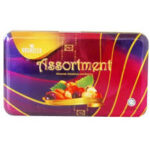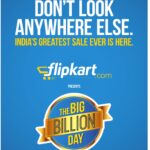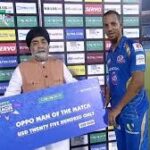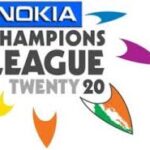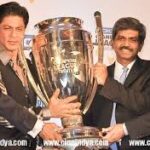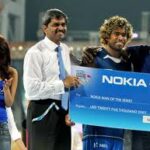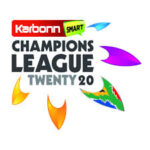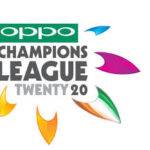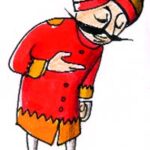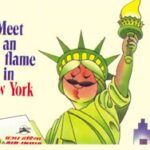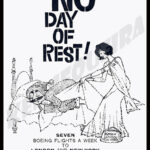Brands & Branding
A collection of marketing articles inspired by news, events and happenings. A view of the world through a marketers lens, drawing branding lessons from everyday occurrences and observations.
Bounce
Brand New Resolutions MMXV
It’s that time of the year again and A Brand View Story is back after a break! A break meant some time to think and what better to think about than how the next year should be from the perspective of brands.
So here are 5 Resolutions for 2015….
Start using “Radio” more effectively

First up a disclaimer, I hold no brief for the industry. What I write simply comes from the understanding; however little, gained by virtue of being a part of the industry. I believe that brands have tended to overlook the benefits that radio as a medium affords them.
The reasons for the brand apathy perhaps are not as much related to the lack of understanding of the benefits but to the lack of measurability. Apart from the commercial broadcast service of the AIR, there are over 200 FM stations across 89 cities and towns today. The estimated listenership at or over 300Mn is certainly higher than newspapers as medium in terms of penetration. Sadly though, from a measurement perspective listenership data is tracked only in four cities by RAM. The other source of listenership data the IRS is too little to go by. Given this lack of measurability brands and agencies both are reluctant to plan better campaigns on Radio.
To justify spends and existence Radio stations are in today’s context de facto activation agencies.
With the Phase III of FM set to take FM radio to 300 towns the time is ripe for brands to relook their media strategies. It also is high time the industry came together and invested in a better, more robust and representative measurement system. With the C&S explosion, the ad-spends on Radio moved towards the lesser/niche channels that were available for a bargain and lately Digital is the blue-eyed boy.
The Prime Minister of the country has already made the medium his own with his “Mann ki Baat”. Question is, are the brands alive to this low hanging fruit in the media-scape?
Stop “SELFIE” campaigns

I for one have had enough of brands using the “selfie” phenomenon. I have in a previous post titled “SELFIE Obsession” aired views on this. Just like other fads it’s time to bid this one goodbye.
 Stop confusing “INVOLVEMENT” with “ENGAGEMENT”
Stop confusing “INVOLVEMENT” with “ENGAGEMENT”I don’t mean to split hair here. These are adjacent words and I am aware that context defines their use. It is a fine line and as marketing professionals we have got to understand the difference between consumer Involvement and consumer engagement. I am sure we are in agreement that we have had enough euphoria around campaign activations and saying wow. The difference between the two terms essentially lies in the degree.
The basis of activations is for brands to have a “conversation” with the consumer affording them an opportunity to “engage” with the brand. The passerby, the bystander and the participant are different entities. The smart(er) brands are looking beyond the numbers, looking for patterns leading up to consumer participation.
Patterns do not emerge if you look at the data only when you need it; they only emerge if you are constantly looking at it. In a manner of speaking, analysts need to be like alchemists. They need to keep mixing stuff with the singular belief that they will produce gold!
More of “Swachh Bharat Abhiyaan”

Sincerely believe in this one. If all the brands and corporate house pledged their CSR budgets towards this movement we can make a visible difference. SBA is not a one-time thing it has to be a constant endeavor.
There was a very poignant scene in Sir Richard Attenborough’s Gandhi wherein the Salt Satyagrah is depicted. The undeterred peaceful protestors keep coming at the British to face their assault. That’s the kind of perseverance the Swatchh Bharat Abhiyaan requires. We have to shame those who litter into mending their ways.
http://www.youtube.com/watch?v=ciTmDDFjFvk
It’s not just the government alone who will need to keep at it. Individuals and organisations need to adopt blocks, localities, towns etc and guard (read keep them clean) zealously. The government should consider offering exclusive branding rights to corporates for zones that they maintain.
Charity as they say begins at home and this is as much a note to self.
Less of Cricket (T20) sponsorships

Again this is one that has been done to death. Especially the T20 variety. Brands have put money on any cricket that has come their way. From Celebrity Cricket Leagues to Gully Cricket Leagues all are attracting marketing spends with questionable returns. Planners and bean counters would well be advised to look at options in 1 & 4 above.
Those were my two cents. Here is wishing all a very prosperous 2015!
The Brand Legacy
We live in some very interesting times. A competition or contest of any kind makes for an interesting read or watch. Politics perhaps has been the longest running entertainment show known to civilization. Politics is also an important teacher of strategy as much as it is a practitioner.
Ever since the new BJP (Bharatiya Janata Party) led government has been sworn in, its predecessor in government, leader of the alliance and hitherto India’s principal political party, the INC (Indian National Congress-I), has been fighting a battle of existence. Its diminishing relevance to the political context has its leaders vexed and despite the bravado, extremely worried.
No, this is not a post on politics. It’s a brand view on the latest tiff between the two that has been hitting the headlines. One may argue that it is media created but the fact is spokesperson from both sides are eagerly firing salvos.
The allegation is that the BJP government at the centre is systematically hijacking and ‘appropriating’ the icons of the INC. Mind you, the reference is to tall leaders of the nation such as Gandhi, Patel and Nehru; the makers of modern India.
How so? Well first up (and well before they came to power), the BJP took up the cause of reviving the forgotten legacy and contribution of Sardar Patel. Next, one of BJP government’s biggest initiatives – a cleanliness and sanitation drive “Swachh Bharat Abhiyaan” was dedicated to the memory of Gandhi.
Now, for long years these brands have been considered property of the INC simply because they were members of the same and for over 50 years of independent India the INC was also the ruling party. They were the inheritors of the ‘legacy’!
Roads, railway stations, bridges, schools, universities, hospitals, you name it, have been christened or re-christened to keep the memory of the leaders alive. Scores of government schemes too have been named after them.
So what is new, one may ask. Well, it is the bold in your face use and invocation of the names of these leaders by the BJP that seems to have ruffled some feathers.
In what may in hindsight have been a strategic masterstroke, the BJP think tank instead of creating and building new “brands” read use the names of their founding leaders chose to stick with the mega brands that were already present. Not that there have been no great leaders in the BJP or the Janta Party from which the BJP was formed. Jaiprakash Narayan or Dr. Shyama Prasad Mookerjee or Deen Dayal Upadhyay or even former prime minister Atal Behari Vajpayee they were all stalwarts.
What then are the benefits of sticking with the likes of Gandhi, Patel and Nehru?
- The positive perception that BJP government is embracing the leaders of yesteryear. Thinking of them in their capacities as icons of the nation and not a specific party.
- Not creating new brands also shows the BJP as not practicing the sycophancy that INC has often been accused of.
- Brand Gandhi, Patel & Nehru do not need to be explained. Their values and what they stood for atleast at a surface level is already known; for generations. They are names you come across everywhere from textbooks to airports.
- This is a young country eager to move forward, something we referred to in a previous post as well. 60% of this country was born after the emergency era and over 40% post liberalization. The romance of living through the emergency, the ideological wars have no relevance since they were never eulogized outside of the so called intelligentsia. Establishing JP or SP Mookerjee or Upadhyay and their values would take years bringing out from the intelligentsia to the masses.
- Even in the use of the brands the BJP has hit the nail on the head as far as using them for what they stood for
- Gandhi for equality and human dignity. Connected with Sanitation as a human right and linked with his famous quote “Cleanliness is next to Godliness”.
- Patel for unity. Often accused of being divisive in ideology, the BJP’s use of Brand Patel has been masterly.
- Nehru for progressiveness and scientific temper. The last nail in the coffin so to speak. With the 4th generation of Nehruvian descent vying for the top job, the INCs last minute scramble for Nehru’s 125th birth anniversary celebrations has been subject of ridicule.
Lessons in marketing again, a seemingly successful strategy of taking latent brands, connecting them to contemporary requirements in a relevant manner. For the bean counters fantastic Return on Marketing Investment!
Who Stole My Diwali?
Diwali has always been my favourite festivals especially, as a kid growing up in Delhi. It was a festival that came just at the perfect time in the calendar no matter which way you looked at it. It was the much needed respite from school, weather-wise it signaled the onset of winter, it meant a lot of dry fruits being passed around (a novelty if you belonged to a middle class family), new clothes for everyone, the whitewash, the putting up of lights, the rationed fire-crackers, mother spending hours in the kitchen making some traditional sweetmeats and of course all the mithai that came in from outside! Everything about the festival was bright and bordered opulent; middle class family remember?!
This year unlike any other year in my life none of the gift boxes that we received contained any dry-fruits or even mithai! I know as a recipient its bad manners to complain about the gifts that one has received. It obviously is the “givers” prerogative. But seriously not one box containing dry fruits or mithai??!!!
Marketers, yes my own tribe, have over the years stolen Diwali. They have used the all the vile and guile in the 4Ps to rob me of my Diwali. The beautifully packaged gift boxes containing products from the slow moving inventory pile. Delightfully priced combo offers on the run of the mill placed conveniently in the ever accessible department store or online. Finally promoted with messages on various media with emotional and economic innuendos.
The days when one went to the Lajpat Nagars and Karol Baghs of the world to buy dry fruits in bulk had been replaced a decade ago by the enterprising business who made the assortment packs in fancy baskets and partitioned cardboard boxes wrapped in transparent colour paper. One let that pass because as one giving the gift it took away the pain of making packages at home and as a recipient the assortment brought in even the more expensive hitherto untried varieties of dry fruit into the household.
Some wise guy or guys came up with the idea of why Diwali joy should be restricted to sweets alone and over time combo packs or gift packs full of “namkeen” corrupted the Diwali gift boxes. Not to be left behind the fruit juice folks jumped on to the bandwagon. Suddenly, dry-fruits and mithai were vying for space and attention.

. Visiting one of those big pandals put up for Diwali by your neighbourhood “ABC Sweets” and buying the different kinds of mithai was such a ritual. The chena murgi, the kaju katli, the smaller dry gulab jamuns and rasgullas and scores whose name doesn’t matter but you would try out. All gone! This year I didn’t need to lose my patience with the bhaiyya because my boxes weren’t getting wrapped or there was no one to attend to me. A situation that was unimaginable as recently as two years ago.
I guess change hits you when it finally hits and it did this year. We received an overwhelming number of boxes of chocolate. If you too have been at the receiving end of this chocolate box attack you would have by now realized that there ain’t too much variety. I am bored, my kids are bored and a week after Diwali by refrigerator is still full of boxes of chocolate!
So those of you who are reading this and are amongst people who did send a gift box. You robbed me! You ain’t getting any dry-fruit or mithai from me no more!!
Hope of Deliverance: The Silver Lining in the Flipkart Fiasco
The thing with icons and heroes who are put on a pedestal is the inevitability of a fall. Regardless of whether it’s inflicted by fate or brought upon by one’s own deeds it is bound to hurt bad.
There have been Gigabytes of rants in the sociosphere describing how unpleasant the experience was and how suddenly this much loved, revered, more importantly relied upon shopping portal had metamorphosed into a “con” job. Flopkart, Foolkart the brand was getting shot down thick and fast.
Pun apart, the flip side to the story is the fact that over a million (1.5 as per Flipkart’s apology mail) of netizens descended on the site to get their hands on something or anything. Even for a nation that sinks its teeth into the “Yours for Rupee One” formula time and time again the sheer magnitude was a surprise.
The question is if at all any blame needs to be laid on their door? Haven’t there been times when we have turned back from a favourite joint just because it was too crowded or been served bad food or experienced atrocious service? Let’s face it s&^t happens!
I am not passing judgement on Flipkart’s innocence here. No one disputes the fact that the portal could have been better prepared. Last I checked, getting a deal is not anyone’s right. Neither is a communication indicating potential discounts/deals a contract. The point I am trying to make is how can greed be good for one (a customer desirous of a discount) and not the other (a seller aggressively pushing his wares).
Be that as it may, the Flipkart incident is a sign of times and those to come. It’s an emphatic confirmation of the hockey stick trajectory that e-commerce in India is on. A justification perhaps for the billions of dollars of investor faith.
Eighteen: The End of Innocence The top shopping portals are battling it out this festival season in a war reminiscent of the cola wars or the detergent wars. The media houses are raking in the chips. The newspapers are full of gate-folds double spreads, jackets whatever kind of innovation they can offer. Do not have the numbers but would stick my neck out for online guys to have the highest share of voice as compared to any other category.
The white good brands that typically used to surface at this time of the year are seeing their thunder being stolen. It’s a double edged sword for them. On one side the online channel is boosting revenues. On the other, they are holding their breath fearing how the online deals and prices are going to impact their market operating prices, praying it does not give rise to conflict.
While people click and shop away this festive season the online shopping dhamaka’s have given a new hope to all the brands that they host. After two or three failed seasons of the promised festival spike there’s hope of deliverance!
Timing Out : When Brands Need to Say Goodbye
 We have often talked about the emotional bond that brands create with consumers and how it is their raison d’etre. The flip side and perhaps also the down side is the emotional bond that brands form with their creators and managers. Several brand managers and businesses have been guilty of stretching brands beyond, well beyond their limit.
We have often talked about the emotional bond that brands create with consumers and how it is their raison d’etre. The flip side and perhaps also the down side is the emotional bond that brands form with their creators and managers. Several brand managers and businesses have been guilty of stretching brands beyond, well beyond their limit.So how does one really know that it’s time? Unfortunately there are no easy answers. However, we do have some lead indicators that emerge from collective wisdom and common sense. Brands are tricky, we all know that. There is no single definition of brand success.
I for one come from the school of thinking that professes and propagates that brands exist for the sole reason of making businesses uniquely identifiable and profitable. Therefore, true brand measures ought to have blended business metrics.
Coming back. What should we as marketers look out for? The best metrics are invariably those that are rooted in market context. After all reality is a key requirement for a reality check!
The best metrics are invariably those that are rooted in market context. After all reality is a key requirement for a reality check!
Brands typically monitor and map their performance on the following dimensions (or similar)• Recall (Memorability)
• Perceived Quality (Premium)
• Revenue Share (Significance)
• Profit Share (Viability)
• Voice Share (Visibility)
• Relevance (Utility)
• Engagement (Sociability)The seed of this post came from a recent news item that announced the winding down of HMT watches. A brand that was anchored in a nations pride and one that definitely made a mark with atleast two generations of independent India.
If one were to put the above parameters together to construct a health radar, HMT watches one would have seen the brand perform poorly on all of these parameters not today but over atleast a 10 year period.
The call to wind down should perhaps been taken long ago instead of allowing the brand to bleed to death. One may argue that it’s the either the fate or fortune of Public Sector companies in India that the get such extended runs. Fortune because the being a Public Sector Undertaking means a long leash and fate because the long leash often means inaction.
HMT watches is not the only example of brands dying slow painful deaths and for sure the phenomenon is not limited to the public sector alone.
Ambassador another memorable brand owned by Hindustan Motors remained active albeit propped up by its “taxi” and “state vehicle” tag. Long after it had faded the brand managers wanted to give it a might heave with a souped-up version christened Amberoid till reality bit them!
There are bound to be ups and downs in every brands life. The revival, rejuvenation plans should kick into place while most of the markers on the Health radar are still in the pink. It is for the businesses to decide basis their “strategy”. The answers can only emerge from the ability to impact the multiple dimensions enlisted above.
As they say, “An honourable exit is saying goodbye while there are more people asking why rather than why not!”To Cut A Long Story Short
 Brand pundits have forever stressed on the importance of brands creating long term associations. There is a vast choice of media that is available today to brand managers and media planners. Given a scenario where investments are often spread across disparate media, the onus is on the brand to tie the choices with a meaningful message.
Brand pundits have forever stressed on the importance of brands creating long term associations. There is a vast choice of media that is available today to brand managers and media planners. Given a scenario where investments are often spread across disparate media, the onus is on the brand to tie the choices with a meaningful message.The new century and the social media boom gave a new meaning and a fresh lease of life to what have come to be known as Integrated Media Properties. These are typically brand association opportunities that are multi-platform including a combination of TV, Digital, Print, OoH and On-ground events. The most popular being Live Action Sports events, Reality Shows and Award Functions with varying doses of the Bollywood glitz and glamour.
The media houses in order to retain a larger chunk of the marketing dollar conceptualized and networked to create more and more such opportunities throwing in dollops of commercial time, screen space, you name it to maximize brand presence. The agencies as expected were quick to evaluate and ascertain value of each such offering. Huge outlays were made possible with the promise and lure of multiple X returns on marketing investment. The brand teams were happy since they now had a “property” to associate with, build and nourish long term. The agencies and media houses of course were too happy to rake in the moolah. The bean-counters all round were happy too.
Nothing as they say is perfect! Soon with the pressures of economy and other dynamics the brands were shy of making long term commitments and vary of huge outlays. Owning a property didn’t seem that attractive. Several wound down.
Only the property “IP” owners with staying power remained in the fray. However, they sold the dream in parts to realize their investment. The “integrated multi-media platform” and “long term association” story that was used as the foundation crumbled under economic pressures.
There are several examples of “properties” having changed hands. However, to highlight the case in point I will take the example of the Champions League T20.
CLT20 and Sponsors over the years This cricketing event was almost force fitted into the international cricketing calendar. In its 5th edition the property has already had 4 brands as its title sponsors.
Airtel, for the inaugural season followed by Nokia the very next year, Karbonn for the next two seasons and now Oppo for the 2014 edition. The brands (Basis the Most Trusted Brands Survey) and the brand muscle eroding every subsequent year.
The full page ad that appeared in ToI on 17/9/14 had no mention of the sponsors. Gone were the benefits of long term association and even the media platforms if at all integrated, were not all available to the brands. Being the “Title Sponsor” no longer meant getting the fully loaded top end version with all bells and whistles. With the long term vision being out the brands did not really “own” the property and nourish it with their support across their other assets to engage the TG.
The best associations often become integral and a given. Some great examples of association exist in sports like tennis, football and F1. Wimbledon and Rolex, French Open/Davis Cup and BNP to name a few.
Marketers being marketers, “impact properties” became a more popular term of reference.
I am sure the numbers on RoMI all still add up. The question really is whether the brands are really building an association with the TG?
The Last Laugh
 It takes something special to laugh at yourself. To do that not just in front of a mirror but it full public view, you need to have tremendous confidence in your ability.
It takes something special to laugh at yourself. To do that not just in front of a mirror but it full public view, you need to have tremendous confidence in your ability.We would have often seen brands employ humour in their communication. There are certain brands which are known not to take themselves seriously, they are about having fun and they do it unabashedly. Then there are brand that mock their competition. But very seldom have brands mocked themselves.
We have often talked about individuals as brands and in a celeb obsessed country like India we have quite a few. But the masses are fickle they can put you on top or grind you to the ground.
This article is inspired by two examples where the protagonists had the courage to do it. Yes the communication has not been initiated by them but the fact that they chose to be a part of it speaks volumes. They took the risk of facing ridicule. One is an example of someone who has done it at the very start of their career, the other one at the ebb.
Alia Bhatt
Sourav Ganguly
http://www.youtube.com/watch?v=xFkJNlvtqYs
Like I mentioned to laugh at yourself needs confidence in one’s own ability. A confidence that comes from not only understanding the strengths but also the weaknesses. It requires resilience.
And what is it not?
Laughing at one self is not just demonstrated by the ability to take things in the lighter vein. It definitely is not about clowning around.
It’s about taking the bull by the horns. It’s about putting yourself out there to be judged with all your defects and inadequacies in the open. The risk is great but the rewards are far greater.
Can brands take a leaf out of this book and do the same? Can they take a weakness and convert it into a strength? Laugh or ridicule themselves openly and then comeback even stronger? Can they have the last laugh?
Well as they say, “Nothing ventured noting gained!”
3 1/2 Signs of Lazy Marketing
 No less than a dozen brands are vying for the consumer’s attention every waking minute of the day. Some pleading, some enticing and yet others imploring him to give them space and preference.
No less than a dozen brands are vying for the consumer’s attention every waking minute of the day. Some pleading, some enticing and yet others imploring him to give them space and preference.In such a situation, brands and even more importantly those managing these brands need to work extremely hard for their communication to register. Despite being aware of the acute attention deficit some marketers go ahead and release sub-par communication, products and sub-optimal support.
Now one may argue that effective marketing need not necessarily be intelligent but it sure needs to be hard working. It cannot be denied that marketing must eventually end up moving the needle as far as a brand’s awareness, recall, preference, premium, profits, share etc. are concerned.
Often though marketing managers fall into the trap of creating a go to market plan simply because there must exist one. Succumbing to the pressures of fighting the competition, maintaining the share of voice, launching with full aplomb, keeping the channel partners satisfied do tick box but this approach is what breeds “Lazy Marketing”.
So here are 3 ½ signs of Lazy Marketing to watch out for. They might not exactly be as fundamental as the 4P’s but they are a good set of lead indicators if you are in the planning phase.
 Bigger, better, faster, more
Bigger, better, faster, moreIf a product is just about being bigger, better, faster, more as compared what competition has to offer then you know that there is little differentiation involved. So if you hear better mileage, smoother ride or larger, brighter display you know!
 Pricing Paralysis
Pricing ParalysisMost marketers seem to have forgotten about using pricing as lever. If ever they do it’s a defensive move which more often than not says “Hey I am not really sure if my product is better than the other guy, but I am lower priced”. When they do price higher they go on a justification trip. Pricing should signal value and if it doesn’t someone is being lazy.
 Feeding the Fad
Feeding the FadLet’s face it there are only so many ways of doing things and innovation is a stranger who comes into town very rarely. But the worst thing all of us as marketers can do is feeding the fad. Can’t come up with a good activation “Let’s do a flash mob”. Want to get some consumer interaction going “Let’s get people to post selfies!” Ideas do not need to be novel nor do they need to be in vogue, they need to relevant.
And now for the ½ sign
 Leave it to the celeb
Leave it to the celebMarketers must work hard if they want to get this piece right. Yes the decisions get made based on the wisdom at their disposal but never ever should a product or brand allow itself to be carried by a celeb. History is replete with examples that shout out “If the product isn’t great or the story is weak the celeb cannot do it for you.”
Avatars: How Mascots Help Brands Engage Better
 We have all as marketers discussed, debated, worked on creating, shaping, modifying the brands that we have managed. Often the central point of conversation would have been about the brand character, its personality. We would either have brand bibles that gave a pen picture of the brand or at times written one de novo.
We have all as marketers discussed, debated, worked on creating, shaping, modifying the brands that we have managed. Often the central point of conversation would have been about the brand character, its personality. We would either have brand bibles that gave a pen picture of the brand or at times written one de novo.What these pen pictures do is that they make the brand tangible for us. As marketers we have given several dimensions such as names, personalities, characteristics some have also given their brands a face!
Mascots for brands have been around for as long as we have known brands. Brands with mascots achieve a lot with very little. It takes most brands time and effort in the form of consistent communication to establish the character traits and a personality for themselves. Of course along with a Hail Mary for it to be understood by the consumers the way it is intended.
Today more than ever before, in an era of increasing choices and decreasing attention spans mascots can play a very significant role in carving consumer mind-space for brands. The digital natives of today understand and also identify with the concept of “avatars”. The digital natives understand that though not the actual person, the avatars are perhaps the nearest likelihood or the self-projection.
From a brands perspective it allows consumers to interact with a “face” or a “person” instead of some nameless, faceless representative. It adds that little bit of familiarity which is key for brand comfort.
Mascots help the brand engage better with its consumers
- They can be de facto brand spokespersons. Mascots can have real time presence in sociosphere, sharing, commenting, reacting and interacting with consumers all across.
- Mascots are more flexible than other brand assets and identifiers such as logos, colors and fonts. They can speak different languages, dress for the occasion helping brands localize and customize messages. Take on multiple avatars!
- The mascot can be a brands promoter at the point of sale. Driving recall, reinforcing the brands core values and even delivering a sales pitch.
- Brand ambassadors may switch or cease to be relevant but mascots will always belong to the brand.
- The sheen of the brand may diminish over time but mascots are ageless. Sometimes even out surviving the brand.
Mascots needn’t necessarily be cartoons, caricatures or animated characters alone. They can be and are human too. Many brands have successfully created characters and used them in communication across multiple touch points.
Here are a few brands and their mascots that according to me have served or are serving their brands superlatively across TV commercials, radio spots, print ads, hoardings and web films.
Look forward to your thoughts.




